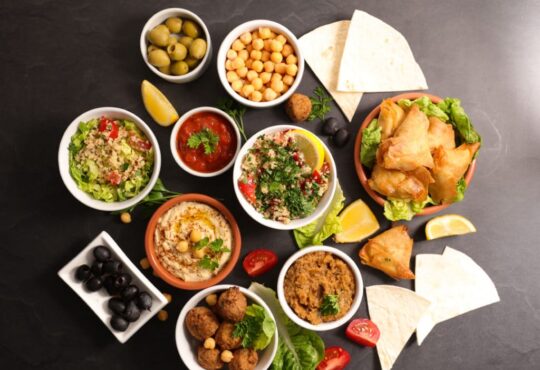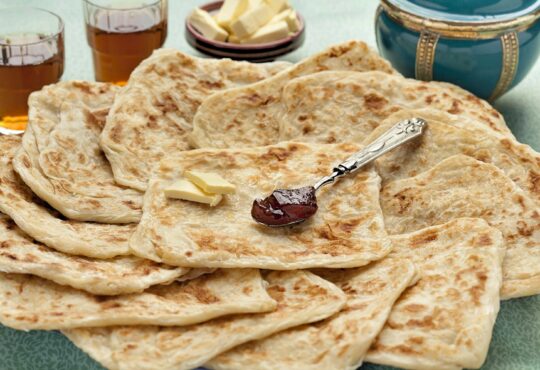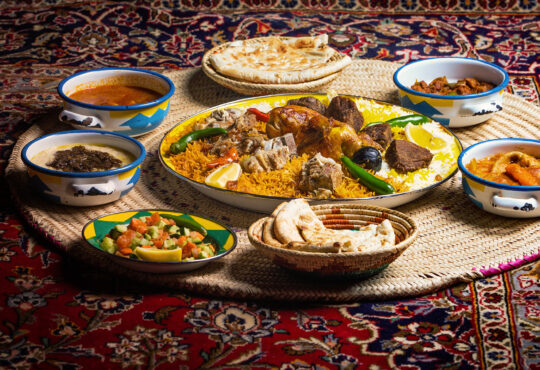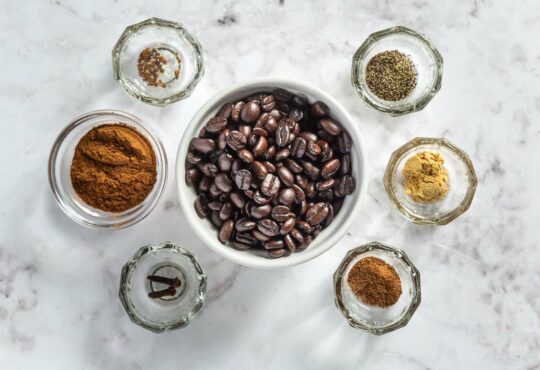
In a world dominated by regular coffee staples like the Espresso and Latte, it is reassuring that there are some countries that still possess some of their own unaltered, age-old coffee traditions. In Turkey, nothing feels and tastes more exclusively Turkish than the smell and taste of a good cup of Turkish Coffee.
What is the difference between Turkish coffee and regular ground coffee? Firstly, Turkish coffee is always ground into a very fine powder. This powder is then boiled in a small coffee pot called a cezve or ibrik and served in a small espresso-like cup.
The Turkish coffee grounds are available in different variations like medium to dark roast. They also sometimes contain spices like cardamom, making its taste somewhat similar to its relative, Arabic coffee.
However, when not spiced Turkish coffee is distinctly different from Arabic coffee in its color and taste. Arabic coffee is golden brown, like the desert sand, while Turkish one is a foamy dark-chocolate brown color, not too far off from regular medium roast coffee.
- studies show that Turkish coffee has many of the benefits of regular coffee. It can increase athletic performance, reduce your risk of diseases, and many more
- It’s reasonably priced. In Turkey, you can buy a quality 100g bag of Turkish coffee for around 1 USD
- It’s the easiest coffee you have ever made. You don’t need any machines, devices, or filter paper. All you need is a stove, fire, or a hot plate. All you do is heat the coffee in a small pot and you are good to go
Turkey’s first encounters with coffee originated back in 1517, when a Turkish governor in Yemen, Ozdemir Pasha, gave some ground coffee to Sultan Suleyman, The Magnificent. Shortly after, Turks developed their own new method of preparing the coffee. They finely ground the coffee beans into a fine powder and used a special copper pot called Ibrik or Cevze to brew it slowly using fire or hot sand.
That was the start of coffee becoming a strong part of the Ottoman tradition. In the mid-1600s coffeehouses in Turkey became places for hot debate among citizens, especially regarding religious and political issues. This leads to anger within Ottoman leadership, even to the level of shutting down some coffee establishments.
Although I am not a coffee lover, Turkish coffee is my favorite and I enjoy a cup devotedly, every single day. It has a special aromatic taste that other coffees don’t have.
The coffee has a slightly bitter taste, thick and dense in texture with a frothy top. In Turkey’s coffee culture, the coffee is served in small porcelain cups, of which half of it is just the sediment. So the thick remaining part is not for consumption.
Turkish coffee has four sugar levels to choose from. In Turkey, you will be always asked how you want your coffee and you should be able to answer in Turkish. The sweetness levels are:
- Sade: With no sugar added
- Az şekerli: With a little sugar
- Orta şekerli: Medium sweet
- Şekerli: Which means sweet
Historically, the art of making a good cup of coffee has been very important for Turks. So much so, that a man would decide on his life partner, based on how well she could make coffee.
The tradition was, and to a lesser degree still is, ceremoniously, that when a young man visits the home of a girl who is interested in marrying, she would make and serve him a cup of Turkish coffee. If the coffee was good, then this would be a good sign.
On the other hand, it is said that the girl would sometimes intentionally add salt to the coffee to test the love and commitment of her suitor. Thus, if he persisted in finishing this very unpleasant cup of coffee, it would be a sign of his strong love and commitment.
Turks love their coffee ritual and they drink it all the time, usually after meals. When you visit a Turkish family, they make sure to give you a freshly brewed cup of Turkish Coffee. It is also a must-serve during their traditional occasions such as engagements and weddings.
I have seen different ways of making Turkish coffee, thus far. The first one is when they use that traditional pot called a cezve / Ibrik to brew the coffee slowly on a stove. And the modern way is using the machine (A kind of a coffee machine) where you add the coffee and sugar and the machine adds the water depending on the size of your cup selected.
But I still think that the traditional way is way better and more authentic. When you watch the foam rise slowly to the top of the pot, that’s when you know that your magic drink is ready.
Preparing Turkish coffee at home can be possible even without having an Ibrik. You can improvise by using a small pot or saucepan. The smaller the pot is the better. Bear in mind that a successful and perfect cup of Turkish coffee should have a thick layer of froth on top.
Making Turkish coffee is quick and easy and it won’t cost you an arm and a leg. There are several easy and innovative ways to make Turkish coffee, using basic items that you can find in your kitchen.
The traditional and most common way to make Turkish coffee is using the cezve or Ibrik, which is a small copper pot with a handle. A regular coffee pot, cezve, can be purchased for as little as 2 USD on the streets of Istanbul.
If you don’t own a cezve then you can use any other small saucepan or metal teapot that goes on the stove. The smaller the pot, the better. The idea behind making Turkish coffee is very simple. It is boiled for a few minutes on the stove and then immediately poured into serving cups. That’s it. Some refer to this method as cowboy coffee, since it resembles the old American way of making coffee in the Wild West.
There are several types of coffee machines on the market. They come in different shapes and sizes but all work on the same concept. They consist of a cup that heats up the water until the coffee is ready. These devices do make it easier to make Turkish coffee but I still think the old-school way is better and produces more foam and a better smell.
- 1 tsp Turkish coffee
- 1 1/3 teacup of cold water
- sugar (to taste)
- Step 1: Fill your teacup with cold water and transfer all the water to your Turkish coffee pot or whatever pot you are using
- Step 2: Add another one-third of a cup of water to the pot, to compensate for the boiling. This will ensure that you get a full cup of Turkish coffee when you are done.
- Step 3: Place your pot on medium heat on the stove. do not cover your pot, let it open
- Step 4: for a single cup add a teaspoon of your Turkish coffee (grounds). Due to its powdery nature, you may find that the spoon tends to pick up a heap, automatically. Don’t bother to level the spoon. You will be able to alter your quantity each time, depending on how strong you like your coffee.
- Step 4: Add your desired amount of sugar. I think that coffee is enjoyed best without sugar.
- Step 5: Now you need to sit back and let your coffee do its thing. Some say it’s a good idea to give your mix a small stir, which creates a lovely golden foam. Others say that you should wait for the coffee to sink on its own. I don’t stir my coffee and it comes out perfect.
- Final step: Once you see the top start to thicken, remove your pot from heat just before it starts to boil, as you do not want to over boil your coffee. then pour your coffee straight into your cup and give it a few seconds to settle before diving in.
- There is no need to filter or separate the liquid from the muddy coffee powder. Due to its fineness, the coffee powder will automatically sink to the bottom of your cup.
- Turkish coffee is usually served in a small teacup, accompanied by a glass of water and a sweet, to counter the bitterness.
Did You Make This Recipe? How you went with my recipes? Tag me on Instagram at @CapeToCasa.
Turkey has retained one of the world’s oldest coffee drinking traditions, Turkish coffee, which has remained somewhat unchanged until the current day. An acquired taste to some, Turkish coffee has become an international sensation. Many favor Turkish coffee because it is relatively cheap, easy to make, and most importantly, something different. Turkish coffee has stood the test of time. It has survived wars and revolutions. It has even managed to hold out against the onslaught of its major rival, tea.





